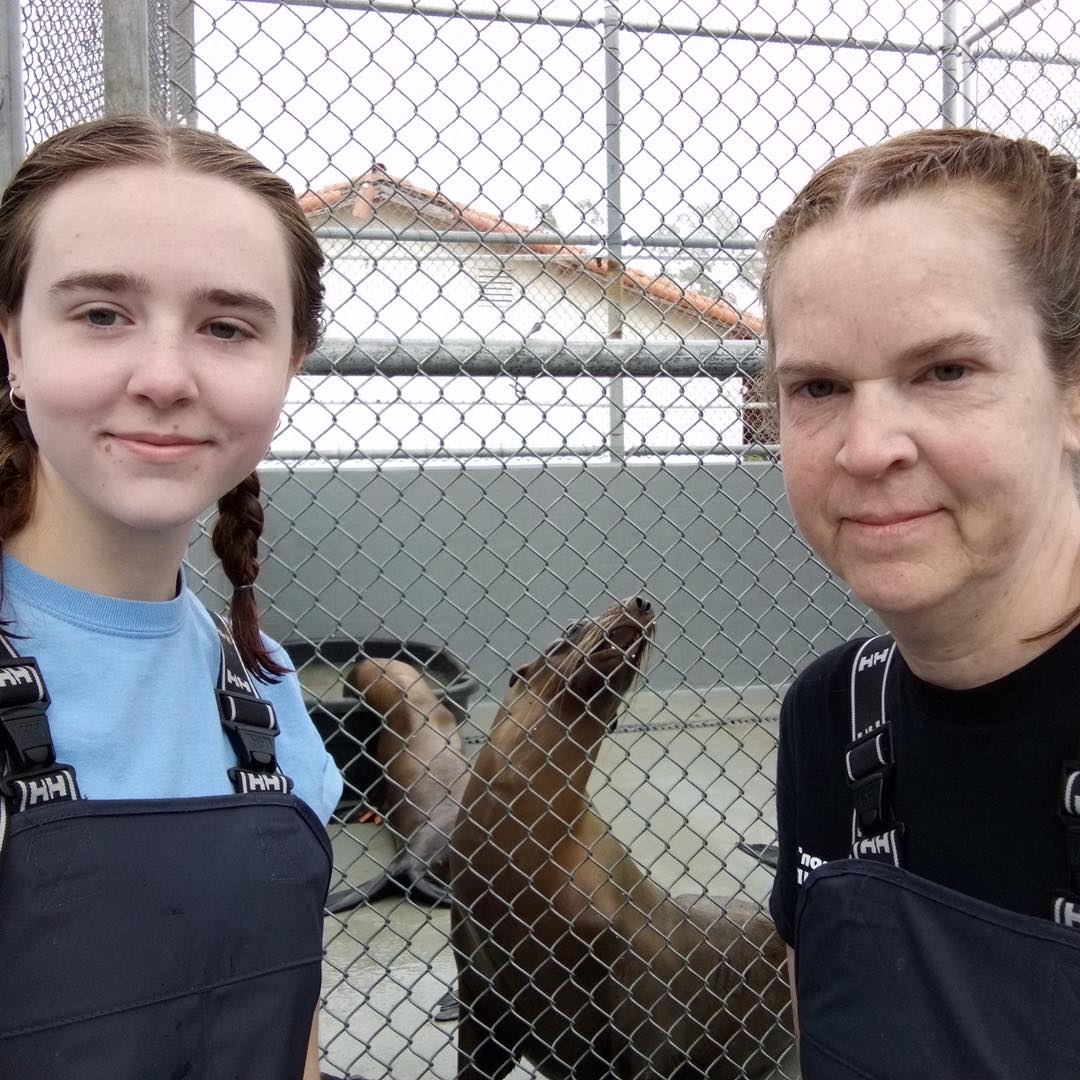Summary:
– Introduction to CIMWI and the domoic acid crisis affecting marine life in Santa Barbara and Ventura counties.
– Explanation of domoic acid and its effects on sea lions, dolphins, and other predators.
– Description of Laura and Lily’s experience at CIMWI and the tasks they performed to assist with the animals’ care.
– Discuss the rewards and importance of volunteering at rescue centers like CIMWI.
– Conclusion highlighting the significance of supporting organizations working towards wildlife conservation and encouraging readers to get involved.
Recently, we had the incredible opportunity to send two of our team members, Laura and Lily, to the Channel Islands Marine & Wildlife Institute (CIMWI) in Santa Barbara, CA. CIMWI is an organization dedicated to the rescue, rehabilitation, and release of marine mammals in the area. Little did they know their experience there would expose them to a unique and fascinating crisis affecting these magnificent creatures.
The institute has been overwhelmed by an unprecedented domoic acid crisis that has wreaked havoc on sea lions and dolphins in Santa Barbara and Ventura counties. Now, you may be wondering, what exactly is domoic acid, and how does it affect these marine animals?
Domoic acid is a neurotoxin produced by a species of microscopic marine algae known as phytoplankton. These tiny organisms can become more prevalent during transitional periods when an upwelling of water causes deeper water to rise to the surface. As sunlight reaches the surface, it provides the ideal conditions for algal growth, leading to the proliferation of these toxin-producing algae.
While filter-feeders, such as small fishes, shellfish, and bivalves, consume this toxic algae without any harmful effects, the same cannot be said for predators like sea lions, sea birds, and humans! When these predators consume filter feeders filled with domoic acid, they can suffer severe consequences. It’s similar to what is commonly known as a “red tide,” where the water takes on a reddish hue due to the abundance of toxic algae.
Now, let’s dive into Laura and Lily’s experience at CIMWI. During their time at the institute, they provided invaluable support and assistance in the daily tasks required to care for the center’s 56 patients, which included 55 sea lions and a lucky elephant seal. From cleaning the holding areas to feeding the animals and assisting with their treatments, Laura and Lily were fully immersed in marine mammal rescue and rehabilitation.
Their firsthand experience with these incredible creatures left a lasting impact on Laura and Lily. They witnessed firsthand these animals’ resilience and determination, even in adversity. The sense of fulfillment they derived from knowing they were helping to make a difference in the lives of these animals was truly indescribable.
Volunteering at CIMWI and other rescue centers is an amazing opportunity for personal growth and fulfillment and a crucial part of the conservation effort. These centers play a vital role in rescuing and rehabilitating injured and stranded marine animals, with the ultimate goal always being their release back into the wild.
By supporting organizations like CIMWI, we are actively contributing to the welfare and conservation of these magnificent creatures. Whether through volunteering, donations, or simply spreading awareness, every one of us has the power to make a difference.
So, if you find yourself inspired by Laura and Lily’s experience, I encourage you to explore how to get involved in wildlife conservation. Whether volunteering at a local center, supporting organizations financially, or even organizing fundraising events, every little bit helps.
Let us not forget the incredible beauty and diversity that nature has to offer. It’s our responsibility to protect and preserve it for future generations. Together, we can make a difference and ensure that these unique and fascinating creatures continue to thrive in their natural habitats.
In conclusion, Laura and Lily’s time at CIMWI opened their eyes to the challenges facing marine mammals and highlighted the amazing work being done by organizations like CIMWI. The domoic acid crisis serves as a stark reminder of the fragile nature of our ecosystem and the importance of our role in protecting it. Let us all be inspired by Laura and Lily’s journey and take action to support the incredible work in wildlife rescue and conservation.
*****
Source Description
Recently, we sent two of our team members to the @cimwi in Santa Barbara, CA. The institute has been overwhelmed with an unprecedented domoic acid crisis affecting many sea lions and dolphins in Santa Barbara and Ventura counties. Domoic acid is a neurotoxin produced by a species of microscopic marine algae. This phytoplankton can be more prevalent during transitional periods when an upwelling of water causes deeper water to rise to the surface. The algal growth increases due to the sunlight at the water’s surface. Filter-feeders, such as small fishes, shellfish and bivalves, consume this toxic algae that does not affect them. However, when predators like sea lions and sea birds (even humans!) eat these toxin-filled filter feeders, it can severely affect them. This occurrence is very similar to a “red tide.”
Laura and Lily provided support and help for CIMWI by assisting with daily jobs at the center. They were able to help out with cleaning the holding areas of the center’s 56 patients (55 sea lions and 1 elephant seal), feeding those animals and assisting with their treatments—a truly amazing and rewarding experience. We are so thankful they (and we) could help out in CIMWI’s efforts.


